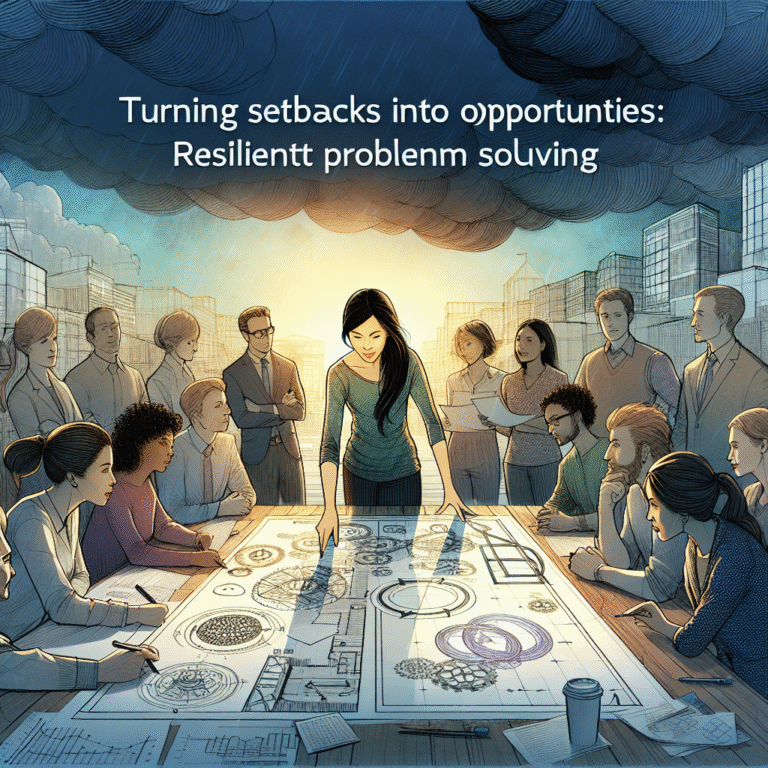
Introduction
In an era of rapid decision-making and resource optimization, understanding the real-world applications: the role of external validity in resource allocation has never been more crucial. Businesses and organizations are routinely faced with the challenge of distributing resources effectively to maximize returns, efficiency, and impact. Yet, despite having access to extensive data and rigorous research methodologies, the translation of these findings into practical applications remains fraught with complexity. The concept of external validity—how results from one context can be applied to another—holds the key to unlocking effective resource allocation strategies.
Imagine a scenario where a groundbreaking study reveals that a particular marketing strategy dramatically increases customer engagement in one demographic. If businesses inaccurately assume these results are universally applicable, the ramifications could lead to wasted budgets, misguided strategies, and missed opportunities. This article delves deep into the real-world applications: the role of external validity in resource allocation, showcasing how understanding this concept can significantly enhance decision-making processes across sectors.
The Importance of External Validity
Understanding External Validity
Before we explore the practical applications of external validity, it’s crucial to define what it means. External validity refers to the extent to which study findings can be generalized beyond the specific conditions or populations involved in the research. Essentially, it answers the question: “Can we apply these results in different settings, populations, or times?”
Why It Matters for Resource Allocation
When organizations allocate resources based on research findings, they must critically evaluate whether those findings hold true in their own context. Misapplying research can lead to suboptimal resource distribution, ultimately affecting performance and outcomes. By considering external validity, companies can ensure that decisions are grounded in a realistic understanding of their unique environments.
Key Components of External Validity
There are three primary aspects to consider:
- Population Validity: Can the findings be generalized to different groups?
- Temporal Validity: Are the results applicable across different time periods?
- Situational Validity: Can the results be generalized to various contexts and settings?
Real-World Applications: Case Studies
Case Study 1: The Health Sector
In the health sector, a study may demonstrate the effectiveness of a new drug in a controlled clinical trial. However, when considering real-world applications: the role of external validity in resource allocation, hospitals must examine whether these results hold true for diverse patient populations with varying health conditions, ages, and socio-economic backgrounds.
Analysis: This is particularly relevant when allocating resources for new treatment protocols. If a drug is effective in a specific demographic but less so in others, hospitals may waste resources by implementing widespread usage without tailoring the approach.
| Aspect | Clinical Setting | Real-World Setting |
|---|---|---|
| Patient Demographics | Homogeneous group (typically enrolled in a trial) | Heterogeneous group (varied ages, income levels) |
| Outcome Measures | Controlled environment | Real-life scenarios affect outcomes |
| Resource Allocation | Targeted, strategic | Needs-based and flexible |
Case Study 2: Marketing Strategies in Business
In the world of marketing, companies often pull from studies highlighting successful campaigns. For example, a tech brand might find that social media ads target young adults effectively. However, assuming the same strategy will work for older consumers would lack external validity, potentially skewing resource allocation to ineffective advertising efforts.
Analysis: By testing the campaign on varied demographics before full-scale rollout, companies can ensure that resources are allocated to the most promising channels, increasing the likelihood of success.
Case Study 3: Education and Learning Methods
The education sector frequently faces challenges in the application of research findings. A teaching method shown to improve outcomes in urban schools may not yield the same results in rural settings. Applying those findings without understanding the contextual differences can lead to misallocation of educational resources.
Analysis: Original research may highlight statistical efficacy, but educators must critically assess whether the teaching method is suitable for their specific student populations and environments.
Best Practices in Applying External Validity
Contextual Adaptation: Always adapt strategies to fit the specific context. Recognizing the unique variables of each environment is essential for effective resource allocation.
Iterative Testing: Before full implementation, conduct pilot studies or trials in varied contexts to gather data on effectiveness across different populations and settings.
Engagement with Stakeholders: Engage with community stakeholders who can provide insights into the local context, helping to determine the applicability of research findings.
Continuous Feedback: Create feedback loops for ongoing evaluation of strategies. This helps in adjusting resource allocation based on real-time data and outcomes.
- Incorporate Diverse Perspectives: Diverse teams can enhance understanding of external validity by bringing different viewpoints and experiences into decision-making processes.
Conclusion
The real-world applications: the role of external validity in resource allocation signify a profound pivot necessary for contemporary organizations. As demonstrated through various case studies, neglecting this critical concept can lead to misguided strategies and wasted resources. By adopting practices that prioritize contextual understanding, iterative testing, and broad stakeholder engagement, organizations can effectively harness the power of research and allocate resources intelligently.
As we move forward in a data-driven world, let us remember that the true value of research lies not just in statistical significance but in practical applicability. The journey towards effective resource allocation is ongoing, and understanding external validity is a vital piece of the puzzle.
FAQs
1. What is external validity?
External validity refers to the extent to which research findings can be generalized beyond the specific context in which they were studied.
2. Why is external validity important for resource allocation?
It ensures that resources are allocated based on findings that are relevant to the intended population and context, minimizing wasted efforts and misdirected strategies.
3. Can external validity vary across different sectors?
Yes, external validity can differ greatly between sectors, such as healthcare, education, and marketing, due to varying demographics, needs, and environmental factors.
4. How can organizations improve their external validity assessments?
Organizations can improve by conducting pilot studies, engaging stakeholders for insights, and continuously gathering feedback on the effectiveness of implemented strategies.
5. What are some common pitfalls in misapplying research findings in resource allocation?
Common pitfalls include overgeneralizing results from one study to different populations, ignoring contextual factors, and skipping pilot testing phases before full implementation.
By embracing the essential role of external validity in resource allocation, organizations not only optimize their resources but also pave the way for sustainable and impactful outcomes that resonate in the real world.














